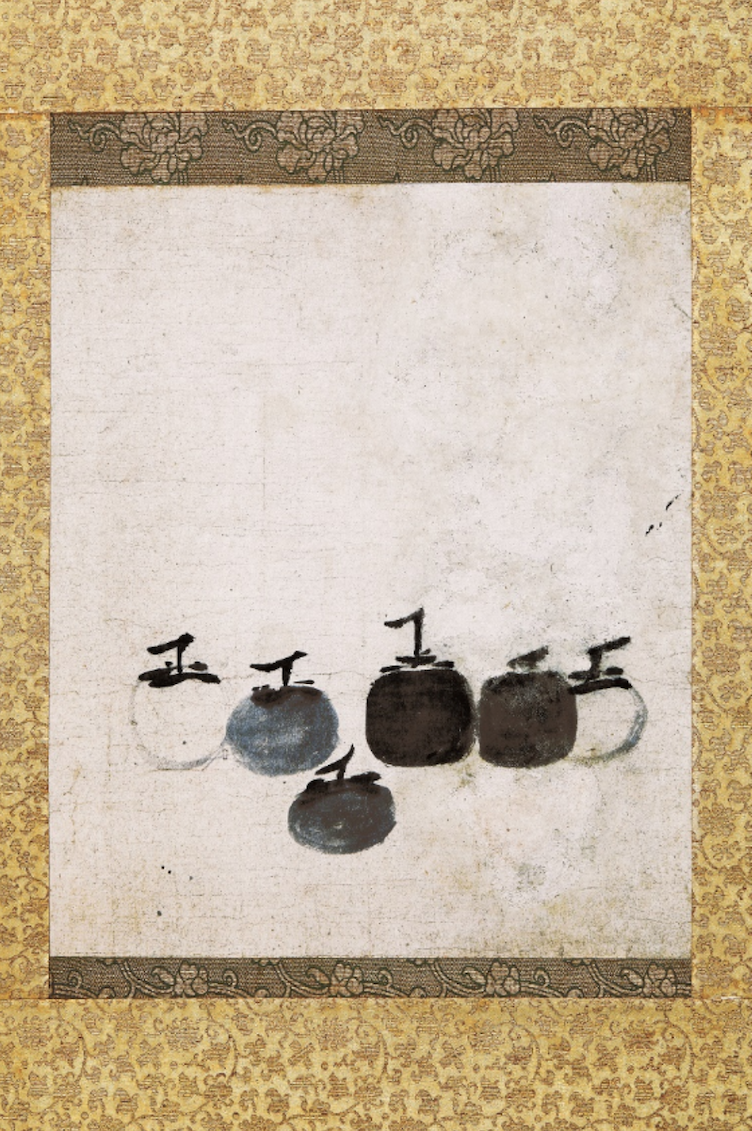Learn about Chan (Zen) Buddhism with Muqi’s Six Persimmons
Muqi, a 13th-century Chinese Buddhist monk, created this famous monochrome ink painting of six persimmons. The monk painter captured the essence of these sweet fruits using very few brushstrokes. Muqi was a Chan Buddhist (or Zen Buddhist) monk, which means he was focused on mindfulness or living in the present. Chan Buddhists believe this can be achieved through meditation, the key to enlightenment.
Persimmons, attributed to Muqi Fachang (Chinese, active 13th century), ink on paper, hanging scroll, made originally in China, Collection of Daitoku-ji Ryoko-in Temple
In the United States, this painting achieved a huge boost in fame during the 1960s when Zen Buddhism became popular. Muqi's Six Persimmons became even more famous as a result. Many people called this painting the "Zen Mona Lisa." Muqi's painting had already been popular in Japan and Japanese art for centuries! His painting is kept at the Juko-in sub-temple of Daitoku-ji Ryoko-in Temple in Kyoto, Japan—and it never left this location until 2023 when the painting was on display at the Asian Art Museum of San Francisco for a short time, along with Muqi's other famous ink painting, Chestnuts.
Learn more about why this painting is so famous in the history of art and how you can try your own hand at Chan ink painting at home!
Here is what the video covers:
0:06 What's a persimmon?
0:43 Introduction to Muqi's Six Persimmons
1:01 What is Chan or Zen Buddhism?
2:06 What does Muqi's Six Persimmons have to do with Chan and meditation?
2:56 Ink and value tones
3:17 Calligraphic brushstrokes
3:50 The goal of Chan ink painting: capturing the spirit
4:44 Trying to paint like Muqi

